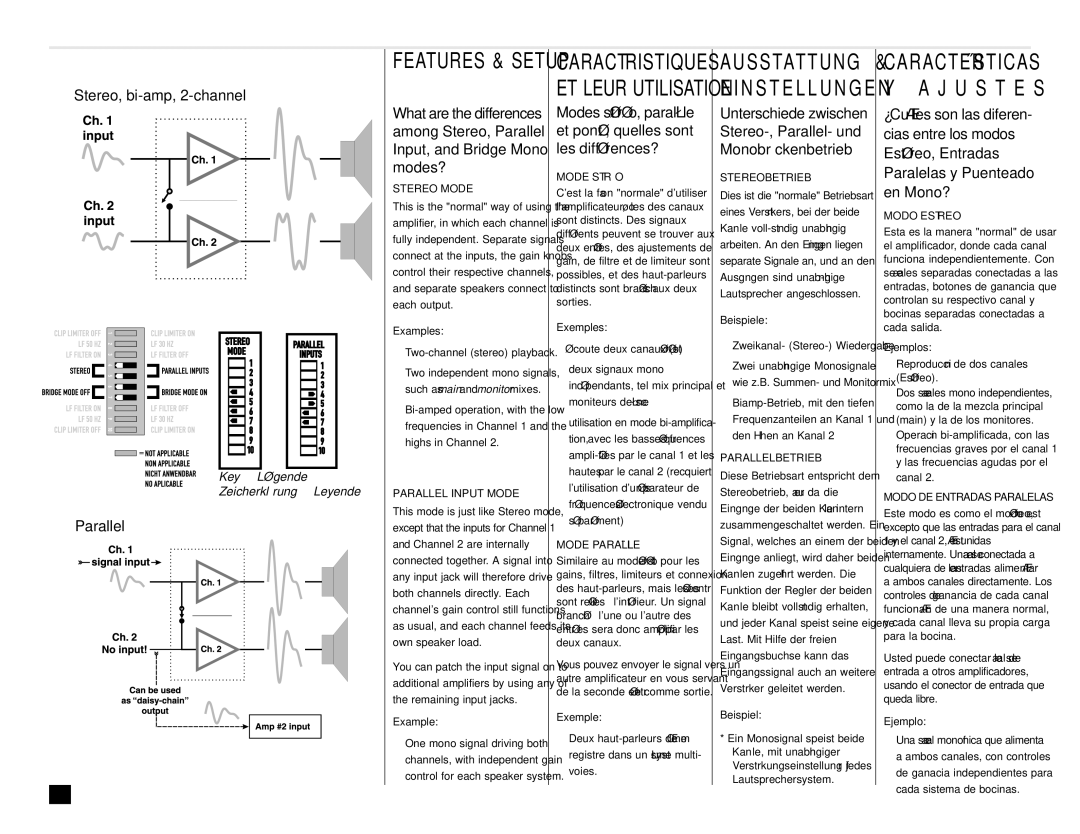RMX 850, RMX 1850HD, RMX 2450, RMX 1450 specifications
QSC Audio is renowned for its high-performance amplification solutions, and their RMX Series is a testament to that legacy. The RMX 1450, RMX 2450, RMX 1850HD, and RMX 850 models stand out for their reliability and robust performance in both live and installed sound applications. Each amplifier in this series caters to different power requirements, ensuring that professionals can select the best fit for their specific needs.The RMX 1450 is an ideal choice for smaller venues, delivering 450 watts per channel at 4 ohms. Its lightweight design and efficient power management make it a favored selection among DJs and live sound technicians who require portability without sacrificing audio quality. It features a durable, rugged chassis, making it resistant to the wear and tear of the road.
Moving up the range, the RMX 2450 offers enhanced power, providing 650 watts per channel at 4 ohms. This model is designed for applications that demand a bit more punch. It employs advanced protection circuitry that safeguards against over-temperature, short-circuits, and DC faults, ensuring longevity under demanding conditions. The RMX 2450 also incorporates a variable speed fan, which contributes to efficient cooling and minimizes noise during operation.
The RMX 1850HD further emphasizes performance with a robust 850 watts per channel at 4 ohms. Tailored for subwoofer applications, it specializes in delivering deep, impactful bass. Its high-current capabilities and the use of large power supplies ensure that it can handle dynamic audio content effortlessly. This amplifier also features switchable balanced inputs, allowing for versatile integration into a variety of sound systems.
Finally, the RMX 850 rounds out the series with a solid output of 300 watts per channel at 4 ohms. Compact yet powerful, it is suitable for both mobile and installed applications. Its reliability in consistent operation and high-quality audio makes it a practical choice for users seeking an efficient amplification solution.
All RMX amplifiers share critical technologies such as high-damping factor performance, which contributes to tight, controlled sound, and their user-friendly interfaces. Additionally, they are designed with heavy-duty components, ensuring that they withstand the rigors of professional usage. Whether in a live setting or a permanent installation, the QSC RMX Series provides sound professionals with the power, reliability, and quality they demand in their audio systems.

